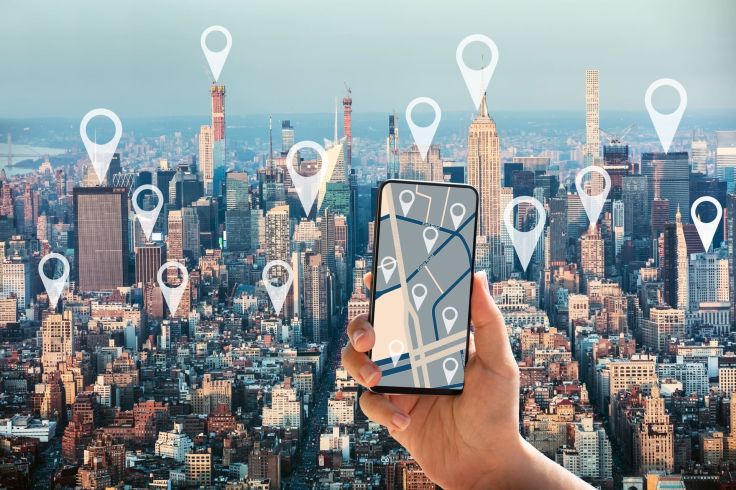Using Geofencing to Enhance Fashion Loyalty Programs
- Published
- 6 min reading

Did you know that the average American spends 4-6 hours a day on their phone? That's an astounding 2-3 months per year! What does this mean for fashion retailers? Well, it's just another way to maximize advertising methods and utilize geofencing marketing to "tap in" to mobile users where they feel most comfortable -- on their phones.
In today's rapidly evolving retail landscape, fashion brands are constantly seeking innovative strategies to engage customers and foster emotional loyalty. Geofencing offers a way for fashion retailers to create personalized and location-specific experiences for their customers, revolutionizing traditional loyalty programs along the way. We're going to delve into the world of geofencing in fashion retail, exploring its benefits, implementation strategies, and how customer data can be harnessed to optimize geofencing advertising initiatives.
What is Geofencing in Fashion Retail?
Imagine walking near your favorite fashion store, and suddenly receiving a notification on your smartphone offering you an exclusive discount or notifying you about new arrivals. This is the magic of geofencing.
Geofencing involves setting up virtual boundaries, or "geofences," around specific physical locations. When a customer enters or exits these predefined boundaries, they trigger automated actions such as push notifications, text messages, or emails that are delivered directly to their mobile devices.
Fashion retailers need every advantage they can get to overcome the highly competitive marketplace, and this is just another tool in the digital marketing toolkit to incentivize mobile users, build personalized marketing messages, and maximize local sales.
Geofencing vs Geotargeting: Understanding the Difference
Geofencing and geotargeting are two distinct location-based marketing strategies, each with its unique approach and benefits.
- Geofencing is highly focused on real-time geographic proximity and can provide personalized, location-specific engagement.
- Geotargeting, on the other hand, is not as precise as geofencing advertising in terms of immediate proximity but allows for a more extensive reach.
The main difference between the two lies in their precision and how they are used. Geofencing is perfect for delivering highly personalized and immediate messages to users when they are in a specific physical location. While geotargeting is better for broader marketing campaigns for users that are in a more generalized geographic location.
Geofencing technology has so many benefits, not only for your business -- but for potential customers as well. Let's take a look!
The 6 Benefits of Geofencing for Fashion Retailers
1. Personalized Engagement
Geofencing enables fashion retailers to send a wide range of marketing materials based on where they are in the virtual boundary. This highly targeted approach enhances the customer experience by delivering content that is relevant to their current surroundings and preferences. From the moment potential customers reach your "fence," you'll be able to engage with them through their mobile devices. 49% of shoppers believe their experience would be improved if retailers offered promotions or deals based on past purchases.
Here are some options:
- Personalized offers
- Unique promotions
- Location-based recommendations
- Targeted ad materials
Using a customer's real-time geographic location gives your brand a ton of creative freedom to craft highly personalized engagement strategies.
2. Precision Marketing Efforts
Connecting with local customers on a more personal level has an immense effect, and geofencing marketing campaigns do just that. In fact, 71% of customers find impersonal shopping experiences frustrating. Not only can a geofencing campaign allow brands to collect data, but it also allows brands to build precision strategies for their target audience -- further improving upon their location-based marketing strategy.
You'll also be able to build more precise content. The benefits of geofencing don't stop with the shopping experience, they also extend to mobile ad strategies and online marketing initiatives. Leveraging not only their GPS coordinates but also purchase behavior gives your brand all of the ingredients it needs to build highly tailored content, targeting users both while they're shopping but also once they leave the store.
3. Increased Foot Traffic
By strategically placing geofences around physical store locations, retailers have more control than ever over where they drive foot traffic. Geofencing gives a direct line to mobile users, allowing retailers to guide potential customers to their stores through rewards and personalized offers.
4. Enhanced Loyalty Programs
Traditional loyalty programs often involve rewards based on past purchases. Geofencing advertising works alongside these programs by rewarding customers for their physical presence in addition to their purchases. This gives retail loyalty programs even more resources to pull from, encouraging repeat visits and deeper engagement with your brand along the way.
5. Timely Promotions
Geofencing allows retailers to deliver time-sensitive promotions. For instance, a retailer can send push notifications about a flash sale happening in-store, ensuring that customers receive the information when they are most likely to act on it.
This not only allows brands to influence purchase behaviors, but also establishes cross-selling and up-selling opportunities. Getting customers into the store is often half the battle, and geofencing often does the work for you.
6. Competitive Edge
Adopting innovative technologies like geofencing can differentiate a fashion brand from its competitors. Digital marketing can get stale, especially when every brand is attempting to reach its potential customers through the same channels, using the same strategies. Geofencing brings your marketing to life, helping your brand deliver highly personalized messaging and offers to local customers at a crucial stage in the buyer's journey. Customers are more likely to engage with brands that offer unique and convenient shopping experiences through these location-based marketing tactics.
Geofencing Checklist: How to Implement Geofencing in Your Fashion Retail Store
- Define Objectives: Start by outlining your goals for implementing geofencing. Whether it's increasing store visits, boosting online sales, or enhancing customer engagement, clear objectives will guide your strategy.
- Choose Geofence Locations: Identify key locations where you want to engage with customers. These could include your physical store, competitor stores, event venues, or high-traffic areas.
- Segment Your Audience: Divide your customer base into segments based on demographics, purchase history, and preferences. This segmentation will help you tailor your geofencing messages for maximum impact.
- Craft Compelling Messages: Develop engaging and relevant content that resonates with each customer segment. Whether it's a special discount, new collection announcement, or event invitation, your messages should provide value.
- Select a Geofencing Platform: Choose a reliable geofencing platform that aligns with your brand's needs. There are various software solutions available that can assist in setting up and managing geofencing campaigns.
- Set Up Geofences: Utilize the chosen platform to create geofences around your target locations. Determine the radius of each geofence and customize the trigger actions, such as notifications or offers.
- Optimize Timing: Timing is crucial in geofencing. Send notifications when customers are likely to be receptive, such as during lunch breaks or weekends.
- Monitor and Analyze: Regularly monitor the performance of your geofencing campaigns. Analyze metrics such as open rates, click-through rates, and conversion rates to refine your approach over time.
How to Use Customer Data to Improve Geofencing
- Collect Relevant Data: Gather customer data through various touchpoints, such as online interactions, loyalty program registrations, and purchase history. This data will help you understand customer preferences and behavior.
- Location Insights: Utilize location data to understand where your customers spend their time. This can help you identify the most effective locations for setting up geofences.
- Behavioral Patterns: Analyze customer behavior within and outside geofenced areas. This can provide insights into whether your geofencing efforts are driving desired actions.
- Purchase History: Combine location data with purchase history to tailor offers that align with a customer's preferences and past buying behavior.
- Feedback and Surveys: Leverage customer feedback and surveys to understand the impact of your geofencing campaigns. Use this feedback to make improvements and refine your strategies.
- A/B Testing: Experiment with different geofencing approaches and messages. Conduct A/B testing to identify which strategies are resonating best with your audience.
What's Next: Building Your Geofencing Marketing Strategy
In conclusion, geofencing is a powerful location-based marketing tool that holds immense potential for fashion retailers looking to elevate their loyalty programs and customer engagement efforts. By leveraging this technology, retailers can provide personalized experiences, drive foot traffic, and create a competitive advantage in the market. Implementing geofencing requires a thoughtful approach, an understanding of customer data, and continuous optimization.
To build an effective geofencing marketing strategy – you’ll need to build an omnichannel approach that works well with your existing loyalty tactics, or future endeavors. If you’re looking for help revamping your loyalty system, check out our Guide for Loyalty Programs in Retail.
As the retail landscape continues to evolve, embracing innovative technologies like geofencing can prove to be a game-changer for fashion brands seeking to build lasting customer relationships.


